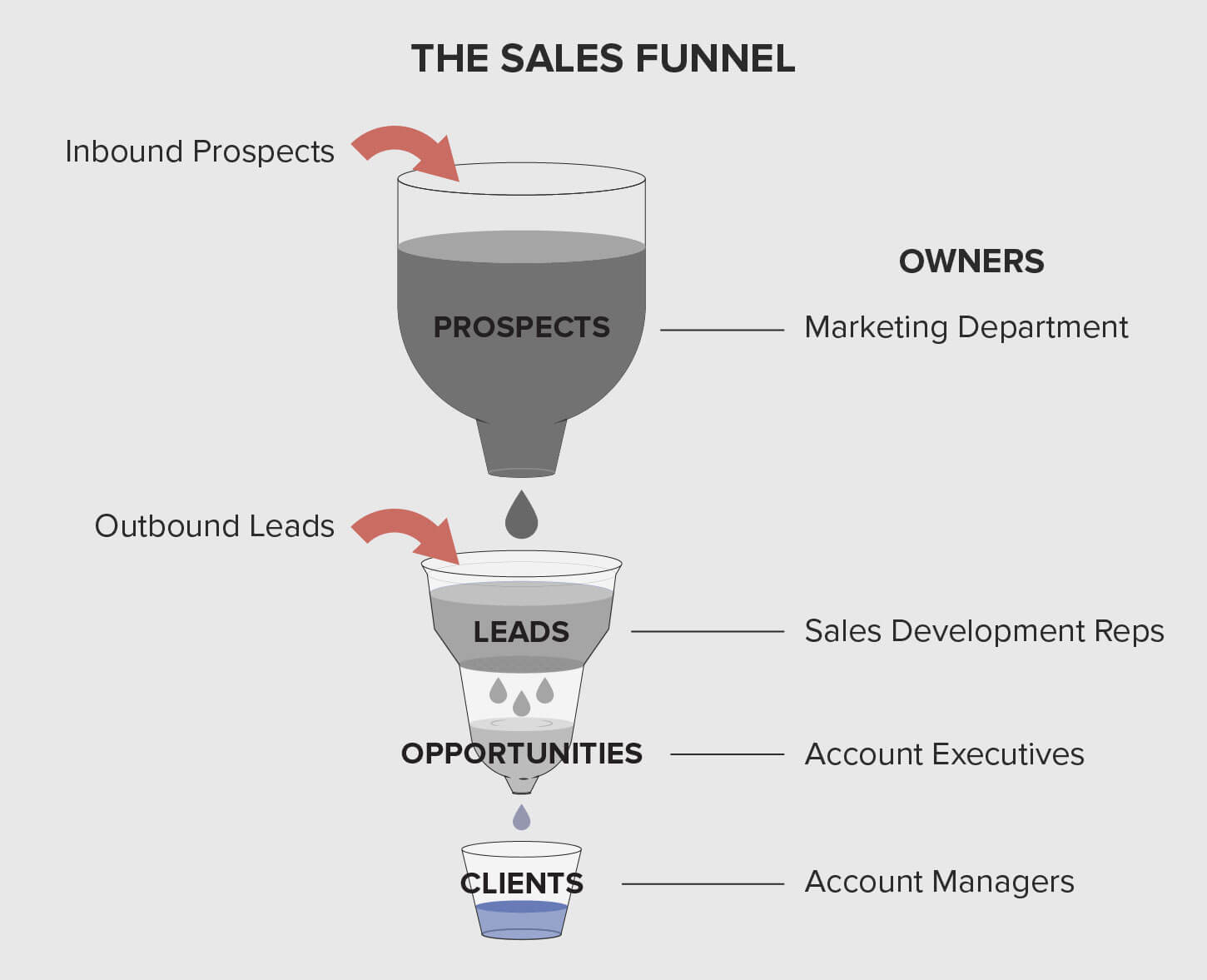
Through this post we will decode why SDRs have become an integral part of sales organization.
What are SDRs?
Sales Development Representatives or SDRs are the new-age Business Development Representatives in the sales and marketing ecosystem. They act as the liaison between newly identified prospects and sales executives.
Marketing’s job is to allure prospects through aggressive marketing campaigns and pass them on to the sales executives for closing the deal. SDRs’ job is to proactively look for leads, qualify them before handing over the details to sales executives.
Hence, there is a clear distinction between what SDRs and Sales Executives do. While Sales Executives close sales by sealing the deal, their focus is on conversion. SDRs do most of the preliminary hard work of looking for leads interested in doing business with you, walk them through your product, and finally judge before pushing them into the sales funnel.
Where do SDRs stand in the sales funnel?
SDRs being the first point of contact for your prospects, they accelerate lead volume through the sales funnel. Sales Executives on the other side of the sales funnel nurture those leads and bring them closer to conversion.

Not many organizations in various industries have introduced SDRs into their sales cycle. But those who have, they have benefited in terms of time savings and manifold additions to revenue. For B2B organizations, especially software vendors or companies functioning in the technology space it makes a significant difference if they make SDRs part of their sales strategy.
What do SDRs do?
So, if you are a B2B organization you can choose to have SDRs on board to see a great impact on your ROI. SDRs drive revenue in a dynamic market in the following ways:
- SDRs not only develop extremely firm understanding of your product they also articulate its value proposition to the leaders at prospective clients that you are aiming to sign deal with. And this is all done without being too pushy. It is not wrong to call them your product’s consultant.
- They do research to identify and target larger businesses. You can say that they go after “big fish” in the market which can often get missed by your Marketing team’s effort or inbound targeting.
- SDRs are highly motivated sales professionals whose job is to single out prospects, get their attention and time for an initial product pitch. After the lead gets qualified they pass it to the sales executives for the rest of the work, which is following up and conversion!
There are two types of SDR’s: outbound SDRs and internal SDRs. Those who specialize in getting promising leads proactively into the system are generally called outbound/ field SDRs.
Numerous marketing campaigns fetch both qualified and unqualified leads. SDRs supporting internal sales actively qualify leads and manage sales pipeline. However, both types of SDRs support sales executives in doing what they are best at – closing deals.
Through this interview Heather Young, VP of Sales Development for Rimini Street gives insight on SDRs role in B2B companies.
“We built an outbound team not only to focus on the inbound leads but also have a proactive focus on prospective clients that we believe have the highest likelihood of benefiting from our offering but they might not be engaged with us already.” Heather Young
Why are they important for your sales organization?
Identifying new prospects/ organizations that are in line with your product vision and bringing them closer to the conversion is only one part of the deal. The end goal that might interest you is rapid increase in your company’s revenue. So, as a business leader, if you have an ambitious customer acquisition goal, it is profitable to have outbound/ field SDRs at the top your sales funnel.
SDRs have clear sense of the fact that times have changed and organizations (both at the selling and buying ends) have become intelligent, sophisticated and time conscious. Hence, they do a fair amount of research work on prospect/s before calling or emailing. Accordingly they make their pitch crisp, alter it around the new prospect’s problem without wasting either parties time and effort. Not only that, based on certain criteria they can also prioritize or even eliminate the identified prospect before pushing it further down the sales funnel. In turn they reduce sales cycle and save time and effort of other resources in your sales team. Moral of the story: better focus is directly proportional to better revenue!
“In this case, if your sales cycle is usually 4 months long, and your average deal size is $100K, then you’ll be making $300K per year per cycle. If you can shorten the cycle by just 1 month, to a 3-month cycle, you’ll make an extra $100k per year per cycle.”, The InsightSquared Blog
Hence, with the induction of SDRs your sales team can work like a well lubricated funnel with razor-sharp handling of clients who are more likely to convert and add to your revenue.
For more information about MoData offerings click here




